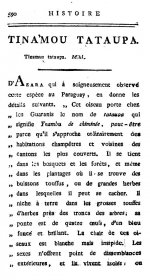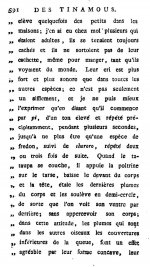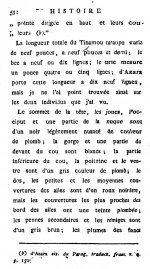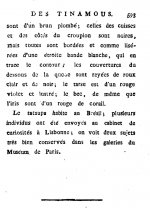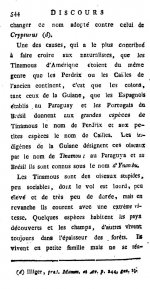Björn Bergenholtz
(former alias "Calalp")

Anyone know the Etymology behind the tataupa in Tataupa Tinamou Crypturellus tataupa TEMMINCK 1815 ...?
As I understand it this name was first noted by the Spanish explorer Félix de Azara as "Ynambú tatáupá" and then applied as a scientific name by Temminck when he, in 1815, described this Tinamou as "TINAMOU TATAUPA Tinamus tataupa" in his: Histoire naturelle générale des Gallinaces/Histoire naturelle générale des pigeons et des gallinaces III pp. 590-593 (Attached).
Since my understanding of French is (to say the least) meager I now wonder if anyone of you guys "out there" (with better understanding of French) can explain if this text tell us anything of its origin, who used this name, exactly what native Indian tribe and is there anything said of its actual meaning? If you could pin-point any certain line, or sentence, (worth a quote) that verify or explain this name I would be even happier?
Anyone feel up to it?
Or does someone already know the true meaning of the Güaraní word tataupá/tatáupá? Does it mean; "yard" "garden", "house", "domestic/tame" or …?
------------------------------------------------------------------------------------------------------------------------------
PS. Does the following senteces from the Tinamou (Discours) Introduction (in the same book, p.544, attached as well) add anything?
As I understand it this name was first noted by the Spanish explorer Félix de Azara as "Ynambú tatáupá" and then applied as a scientific name by Temminck when he, in 1815, described this Tinamou as "TINAMOU TATAUPA Tinamus tataupa" in his: Histoire naturelle générale des Gallinaces/Histoire naturelle générale des pigeons et des gallinaces III pp. 590-593 (Attached).
Since my understanding of French is (to say the least) meager I now wonder if anyone of you guys "out there" (with better understanding of French) can explain if this text tell us anything of its origin, who used this name, exactly what native Indian tribe and is there anything said of its actual meaning? If you could pin-point any certain line, or sentence, (worth a quote) that verify or explain this name I would be even happier?
Anyone feel up to it?
Or does someone already know the true meaning of the Güaraní word tataupá/tatáupá? Does it mean; "yard" "garden", "house", "domestic/tame" or …?
------------------------------------------------------------------------------------------------------------------------------
PS. Does the following senteces from the Tinamou (Discours) Introduction (in the same book, p.544, attached as well) add anything?
"Les Tinamous sont des oiseaux stupides, peu sociables, dont le vol est lourd, peu élevé et de très peu de d?rée, mais en revanche íls courent avec une extrème vitesse. Quelques espèces habitent les pays découvertes et les champs, dʼautres vivent toujours dans lʼépaisseur des forêts."
Attachments
Last edited:




